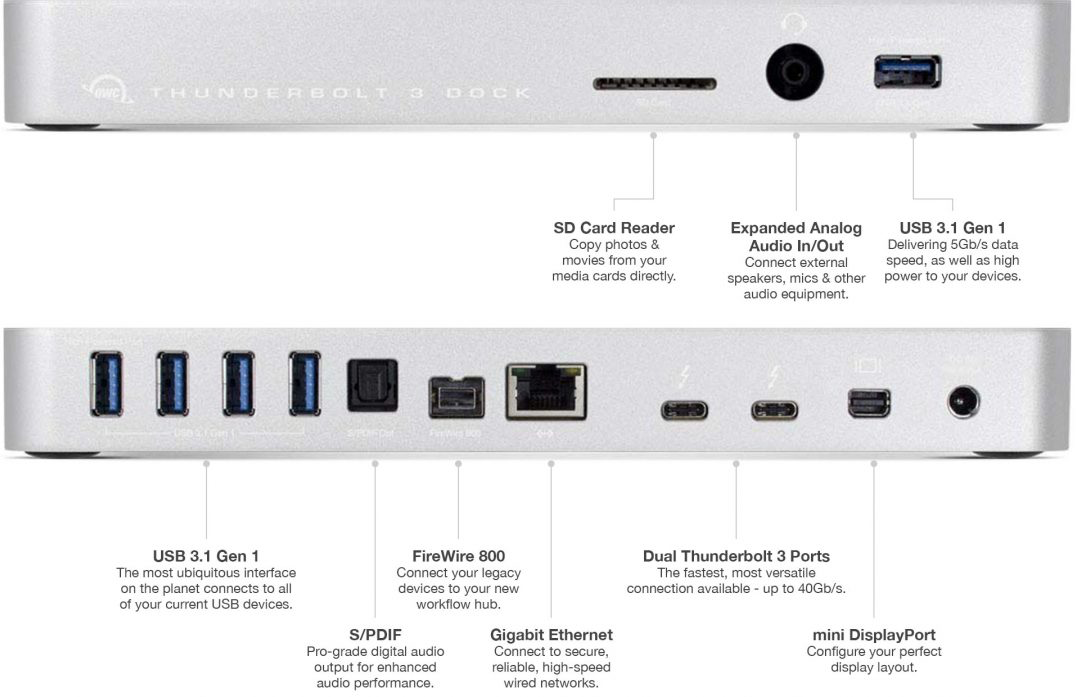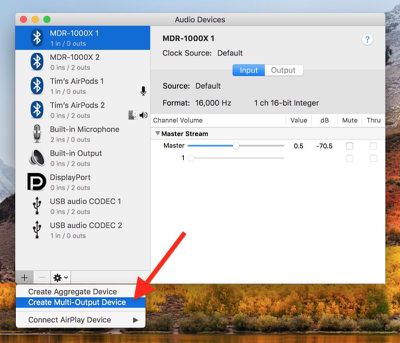

- #Mac audio input firewire for multiple audio connections pro
- #Mac audio input firewire for multiple audio connections software
- #Mac audio input firewire for multiple audio connections mac
They are used to feed your monitor speakers, one for the left and the other for the right. It’s common to see 2 outputs on an audio interface. And if you’re a DJ, you can get away with an audio interface with only 2 inputs. The 8-input interface is probably the minimum you need to record a band. Bigger audio interfaces such as the M-Audio Profire 2626 which has 8 built in pre-amps allows for expansion, where you can stack another one or two units and have over 24 mic pre-amps able to record simultaneously. That means you can plug a guitar or a microphone into the same input.īeing more ambitious? Well, go for the bigger audio interface that offers more inputs. Most audio interfaces these days come with combo jacks with built in pre-amps. You might only need one input for now, but time will come when you find yourself having to record the outputs from a CD player or a keyboard which are usually stereo, meaning that you’ll need at least 2 inputs in your audio interface. However though it’s promoted as a 2 input device, it doesn’t record 2 inputs simultaneously.Ĭoming back to why you’ll need at least 2 inputs (that records simultaneously) on an audio interface, it is basically because I believe 2 inputs give you bigger versatility. The Focusrite iTrack is a nice audio interface that works even with the iPad itself. Also check if the audio interface has Phantom Power as you’ll need it to run condenser microphones. For microphones, you’ll need an audio interface that have a mic pre-amp built in. Most audio interface would have a line level input.

Instrument level instruments like the guitar will require a line-level input on the audio interface.

There a few types of inputs on an audio interface that you should look out for though. If you’re recording your own playing and performances, say using only one microphone or one instrument, you’ll only need one input. We’ll come to why you should buy an interface with at least 2 inputs later. It really depends on what you’re planning to record and the style of music you produce. Why? There are many different types of audio interfaces from interfaces that comes with only 1 input/2 outputs to interfaces that boasts up to 18 inputs and more. If you’re on budget, take my advice and make sure you buy an audio interface with 2 inputs and 2 outputs as a bare minimum. Essentially an audio interface is a sound card on steroids, made for producers, DJs, and musicians. Also if you’re looking for better sound quality when producing music, an audio interface is usually a must. You’ll also need an audio interface if you want to connect your computer to your studio monitor speakers.
#Mac audio input firewire for multiple audio connections software
You’ll basically need an audio interface if you want to record to your computer software using microphones, guitar or your keyboard. Audio interfaces come in different sizes and prices as well – so which one really is the best and which one should you consider getting? Some of them come built with Firewire, USB and even PCI connections. There are lots of choices to choose from when it comes to shopping for an audio interface. It works both ways, where it turns analog signals into digital and digital signals into analog. Think of it as a device for analog and digital to match-make.
#Mac audio input firewire for multiple audio connections mac
If your Mac notebook or desktop computer has more than one port like this, each port supports Thunderbolt 3 and USB-C.Audio Interface Basics – What Is It & Why You’ll Need It What Is An Audio InterfaceĪs it name states, an audio interface is a device to connect your microphones, guitar, keyboard, and other audio sources to your computer. If you have a device that doesn't connect to this port, you can use an adapter to connect it. You can also connect a USB-C power adapter and cable to charge your notebook computer. Use these ports with displays and other devices that connect using either a Thunderbolt 3 cable or USB-C cable.
#Mac audio input firewire for multiple audio connections pro


 0 kommentar(er)
0 kommentar(er)
